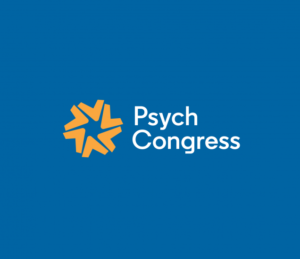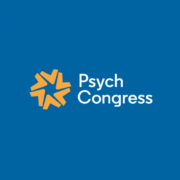Antipsychotics and Cognition in the Treatment of Schizophrenia
 “People with schizophrenia can be treated in a variety of settings,” wrote the late Colorado Recovery founder Richard Warner, MD, in The Environment of Schizophrenia (2000). “Medications are an important part of treatment but they are only part of the answer. They can reduce or eliminate positive symptoms but they have a negligible effect on negative symptoms.”
“People with schizophrenia can be treated in a variety of settings,” wrote the late Colorado Recovery founder Richard Warner, MD, in The Environment of Schizophrenia (2000). “Medications are an important part of treatment but they are only part of the answer. They can reduce or eliminate positive symptoms but they have a negligible effect on negative symptoms.”
Antipsychotics, also known as neuroleptics have had a dramatic impact on the treatment of schizophrenia since they were first introduced in the 1950s. “Time after time, in many thousands of treatment settings, clinical experience has shown that the antipsychotic drugs can bring dramatic relief from psychotic symptoms in most schizophrenic patients,” Dr. Warner wrote in Recovery from Schizophrenia.
In a recent presentation for Psych Congress Network, Leslie Citrome, MD, MPH, clinical professor of psychiatry and behavioral sciences at New York Medical College, Valhalla, NY, examined neurobiological targets, the current research regarding antipsychotics, and other schizophrenia treatment options. “As we are working towards improvement in the pharmacological approaches to schizophrenia, greater attention has been paid to cognition.”
“The neurobiology of cognitive impairment in schizophrenia is complex and does involve the interplay of a number of neurotransmitter systems. They include our favorite players here, dopamine, but also glutamate and acetylcholine,” said Dr. Citrome.
“The role of dopamine has long been of interest to schizophrenia researchers because drugs such as amphetamines that increase dopamine’s effects can cause psychoses that resemble schizophrenia, and drugs that block or decrease dopamine’s effect are useful for the treatment of psychoses,” wrote Dr. Warner in The Environment of Schizophrenia.
The current focus is on “the dorsolateral prefrontal cortex or DLPFC, and its interactions with other brain regions,” explained Citrome. “Now, in the DLPFC, dopaminergic transmission is mainly mediated through dopamine D1 receptors, not D2.”
“Chronic low levels of dopamine in the DLPFC in people with schizophrenia have been demonstrated,” Citrome said. “This is very different from our understanding of the positive symptoms of schizophrenia, which are thought to be due to excess amounts of dopamine in the ventral striatum, and where the dopamine D2 receptor is the target of antipsychotic medications.”
So, it seems to be D1 versus D2—a case of “not enough dopamine” versus “too much dopamine.”
“Actually, what we have in the brain is too much dopamine in one place and too little in the other,” said Citrome. How can this be remedied? “Second-generation antipsychotics also possess strong antagonism at presynaptic serotonin 5-HT2A receptors on the dopaminergic neuron. This facilitates the release of dopamine and theoretically boosts the dopamine levels in the DLPFC. However, attempts to measure this effect have resulted in disappointment,” Dr. Citrome said.
Many studies have been done with second-generation antipsychotics comparing them generally with the classic first generation antipsychotic Haloperidol. As it turned out, “there were only small improvements compared to Haloperidol and very little difference amongst the second-generation antipsychotics themselves.”
Citrome suggested that we have to look at other neurobiological targets. “Of increasing interest is the glutamate system, with its connections with dopamine circuitry. Glutamate is widely distributed in the brain, and it’s the primary excitatory neurotransmitter” in the human central nervous system.
“Experimentally, glutamate has shown to be involved in neuroplasticity and higher cognitive functioning, such as memory,” Citrome said. “In the DLPFC, NMDA glutamate receptors are involved in high-level processes, such as executive functioning.”
The final common pathway, though, is dopamine. “Glutamate neurons regulate the dopamine neurons, either directly, boosting dopamine, or indirectly, acting as a brake, decreasing dopamine. Depending on where we look, we see either effect,” explained Dr. Citrome.
The NMDA receptor has been a target of significant interest in terms of improving its functioning. One theory of schizophrenia is the hypo-functioning NMDA receptor hypothesis. “We can’t give glutamate, but if we give medicines or other interventions that boost signaling in the NMDA receptor” we can boost its functioning.
One option is to increase glycine at the NMDA receptor. Glycine is required for the NMDA receptor to function and theoretically, hypo-functioning NMDA receptors can be boosted by providing more glycine.
“We can do that with a glycine transporter inhibitor, GlyT1 inhibition,” said Dr. Citrome. “You’re going to hear about this. There is a medicine currently being evaluated for this purpose.”
Concluding his presentation, Citrome said that “cognition is an important determinant of function, and cognitive impairment is very common in people with schizophrenia. The effect of medications on cognition is actually independent of how well they work on the positive symptoms. We know we can treat the positive symptoms quite well, but our second-generation antipsychotics don’t quite do the job with cognition. One strategy is to improve on that.”
“In the meantime, we have vocational rehabilitation. We have cognitive remediation, and we should use those to the hilt while waiting for a more definitive intervention,” Dr. Citrome said.
Vocational rehabilitation is an important element in the treatment approach at Colorado Recovery. Our program approaches mental healthcare with a focus on self-reliance through developed practiced skills. Our non-institutionalized philosophy offers comprehensive levels of care supported by an expert medical and clinical team, engaging patients in increasing community participation.
Our treatment facility provides the services needed to address schizophrenia, bipolar disorder, and other serious mental illnesses. Call us at 720-218-4068 to discuss treatment options for you or the person you would like to help.





